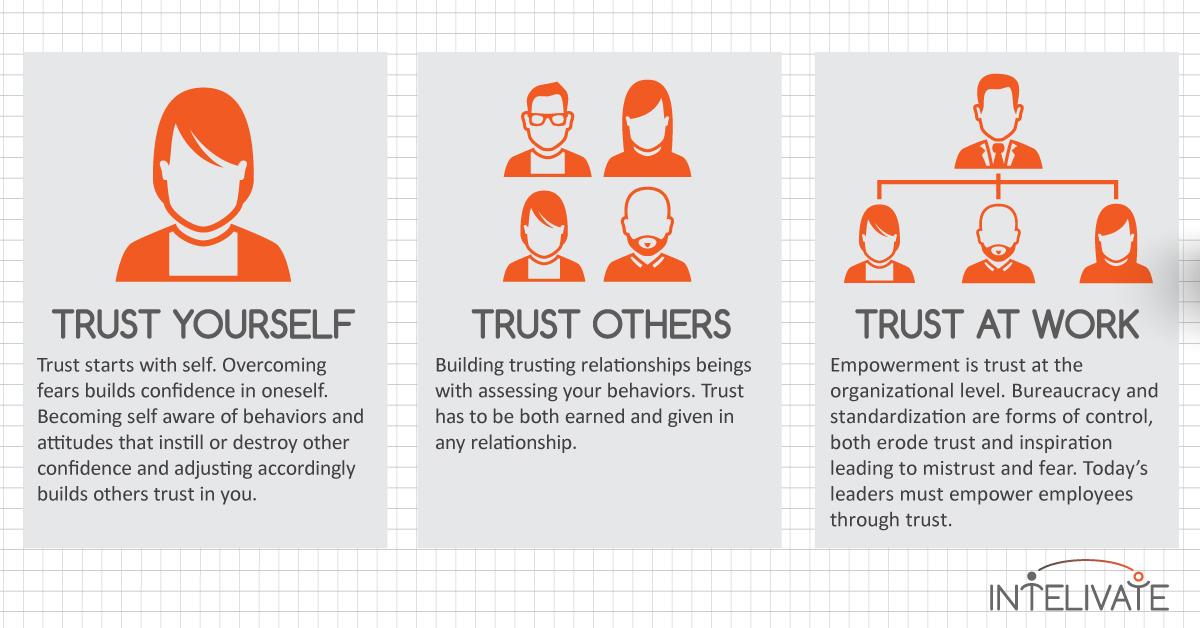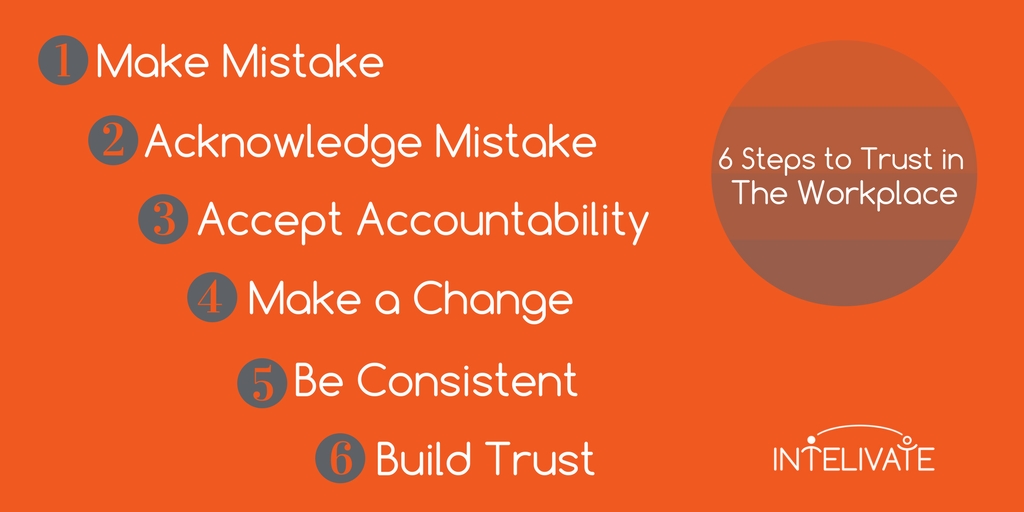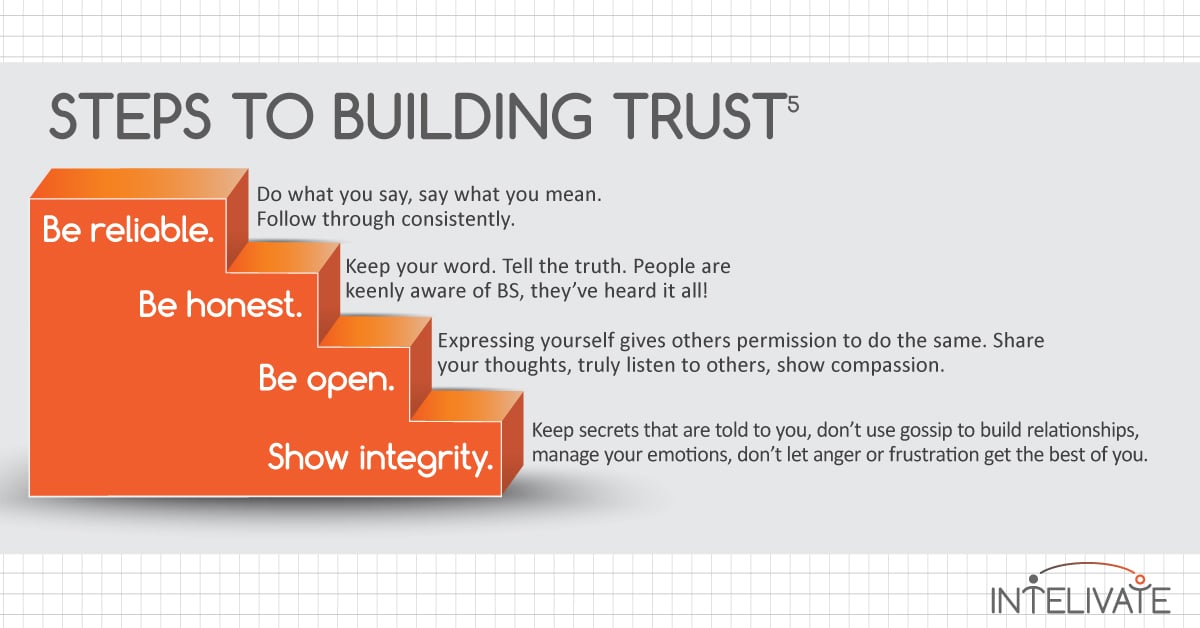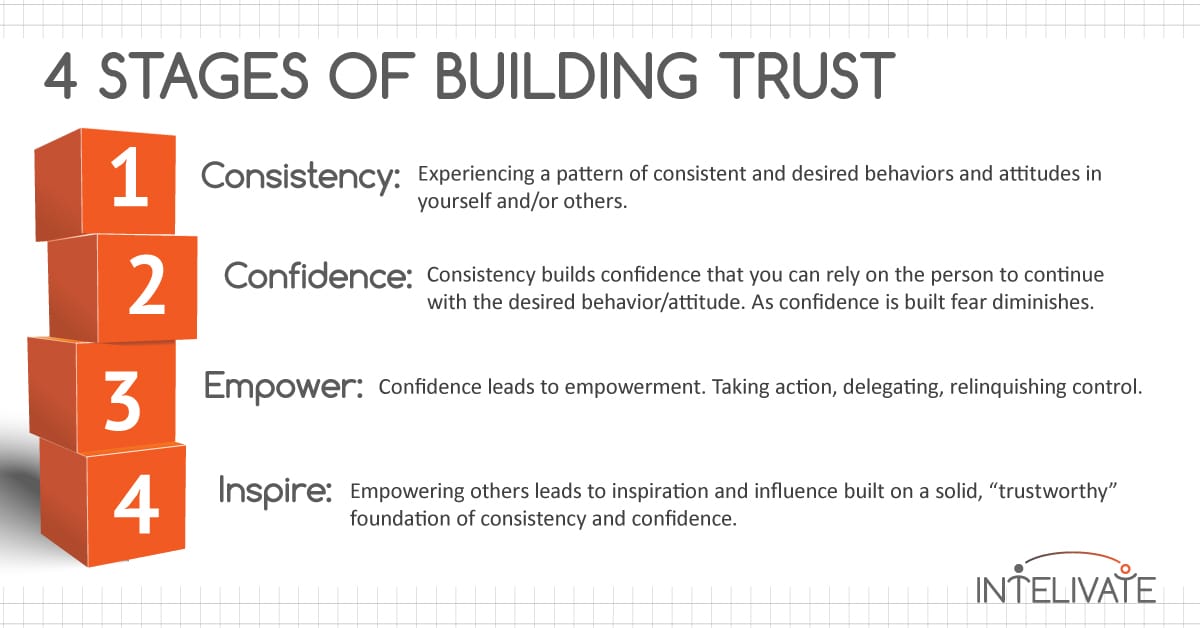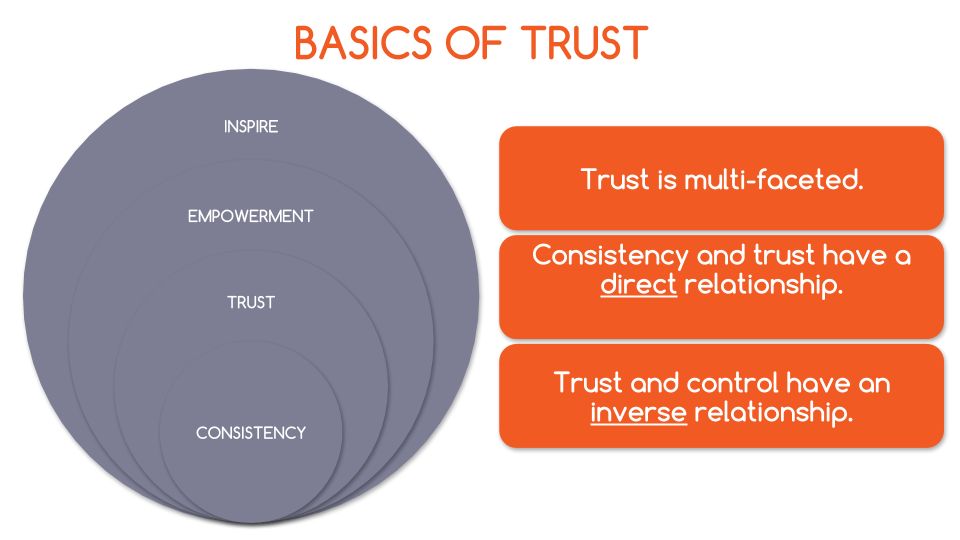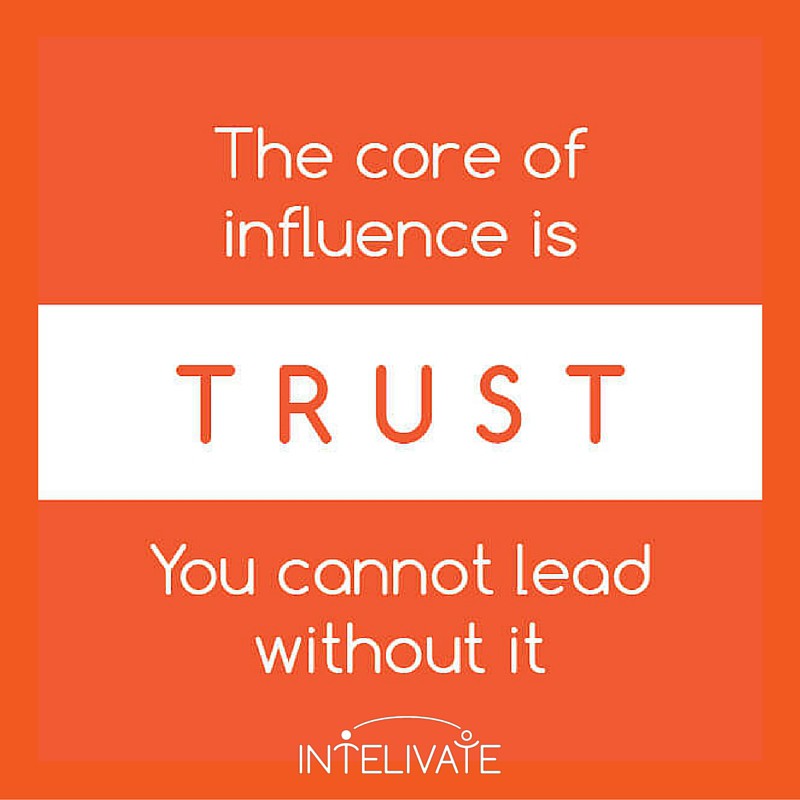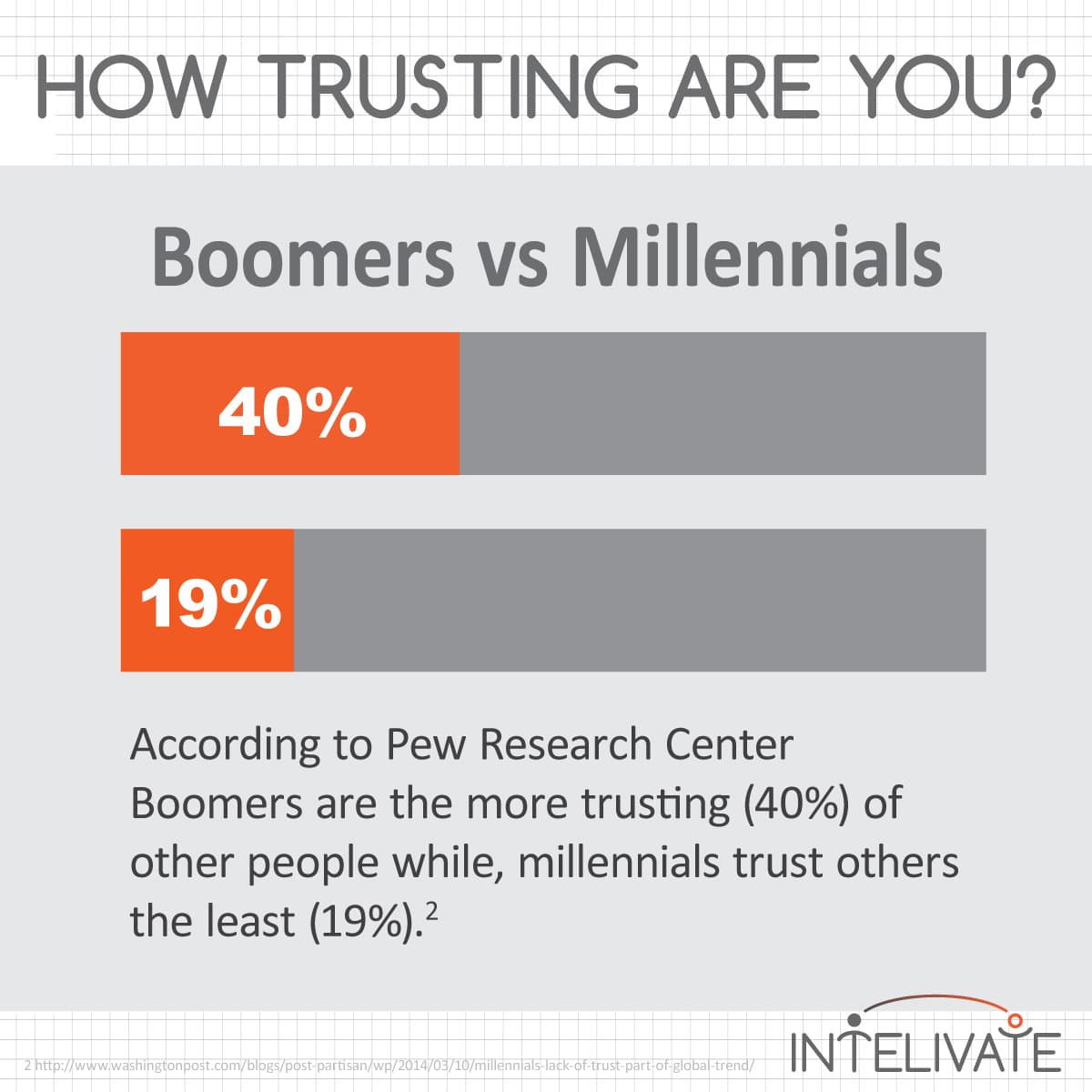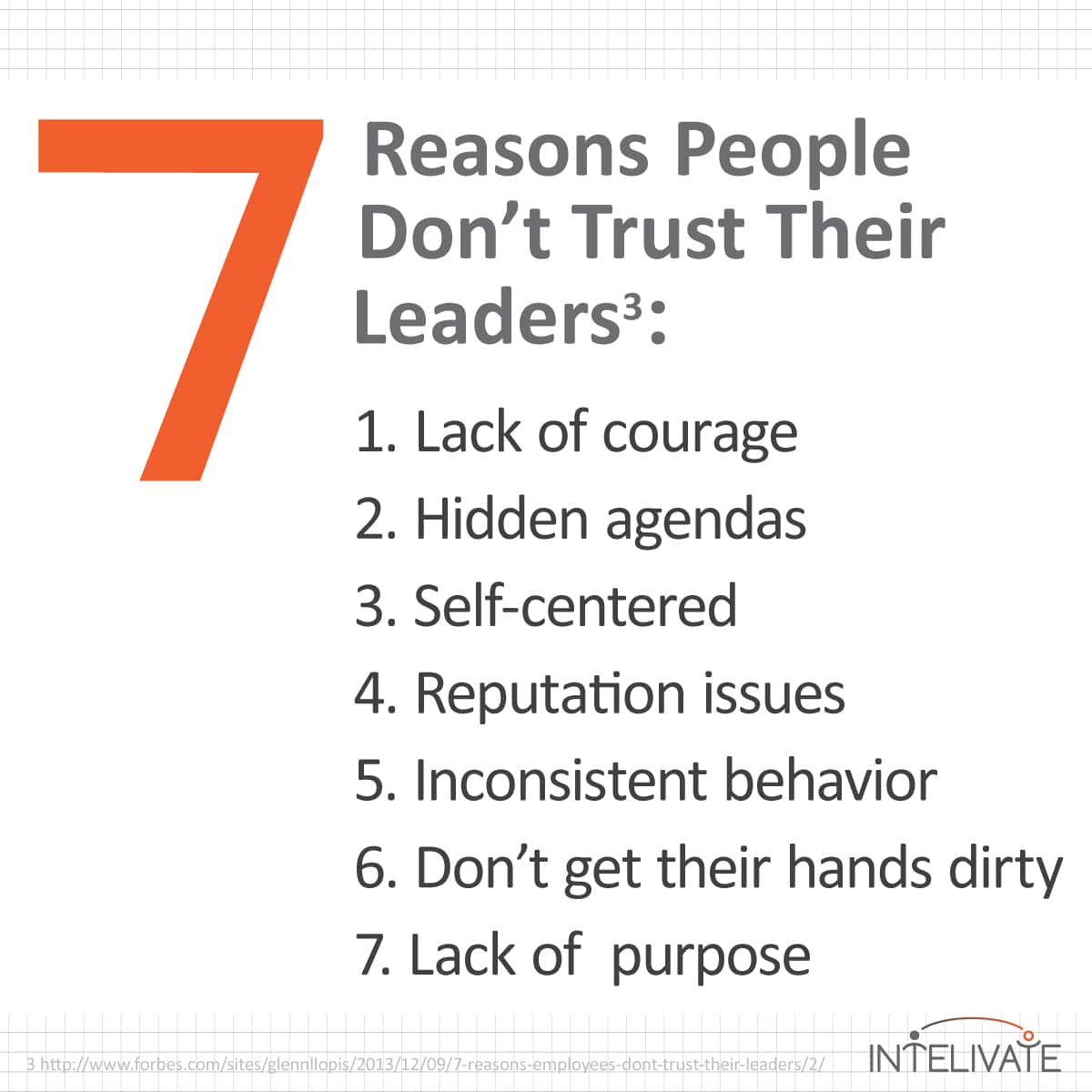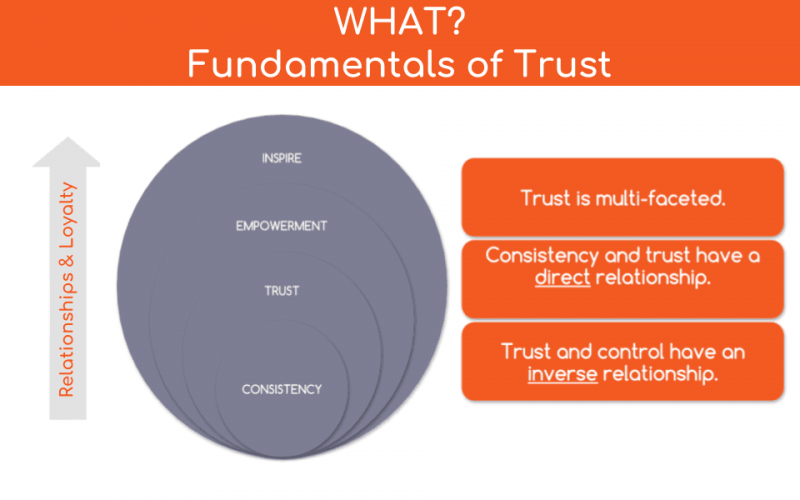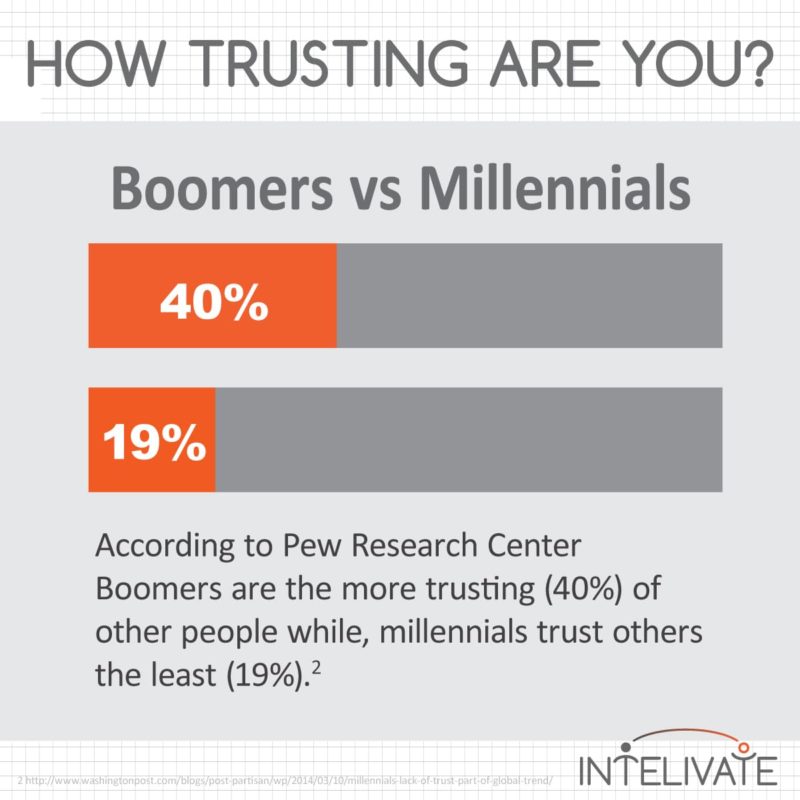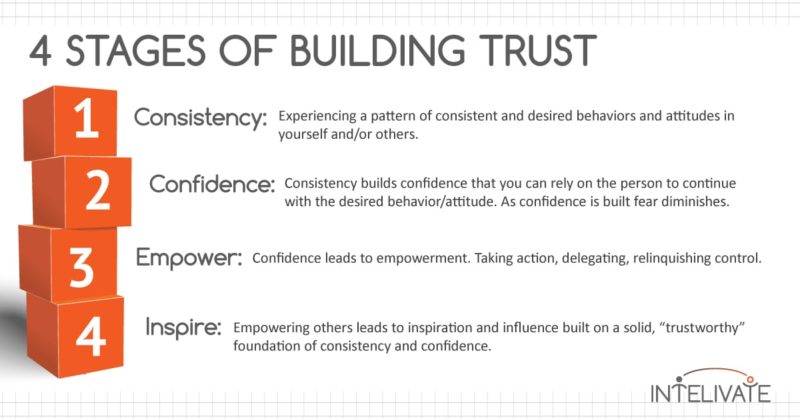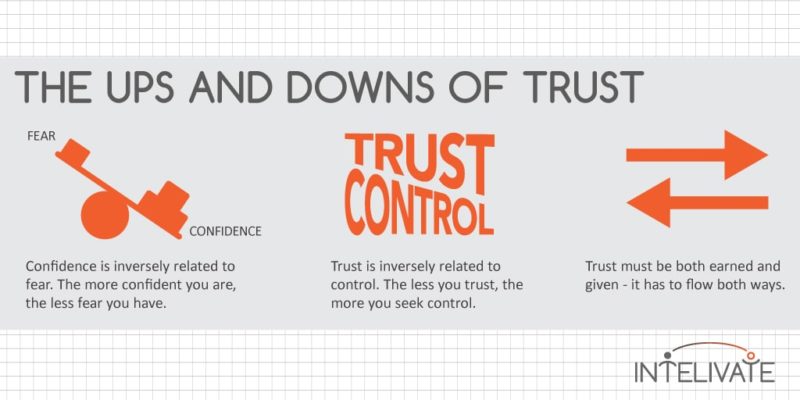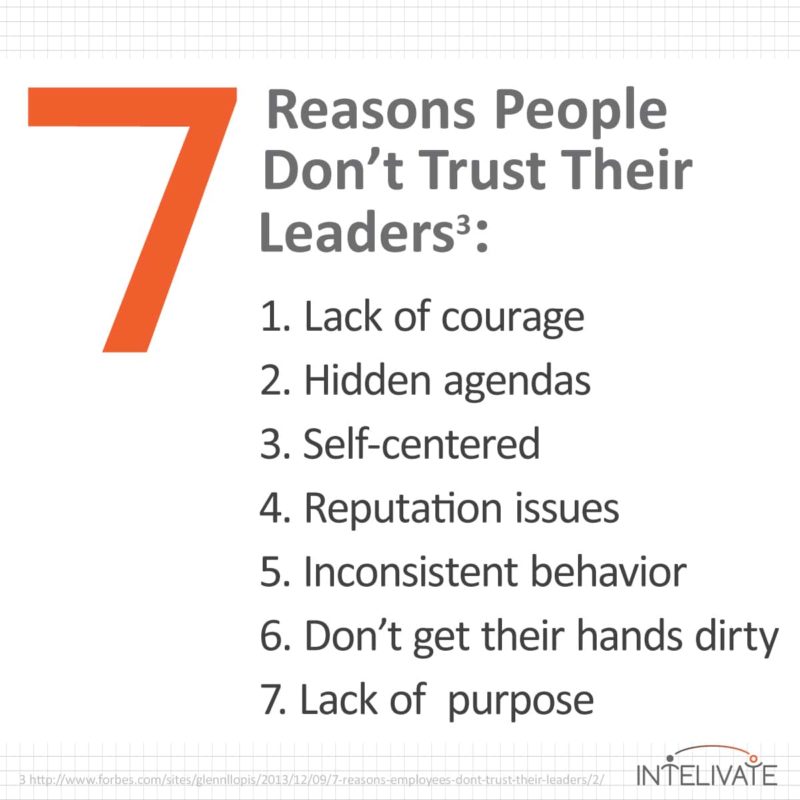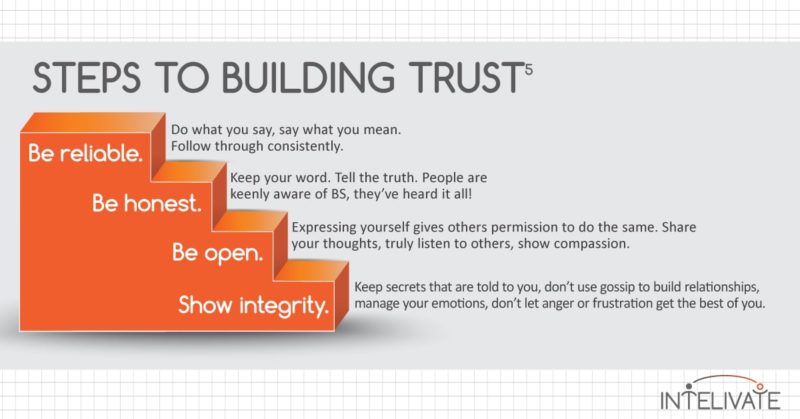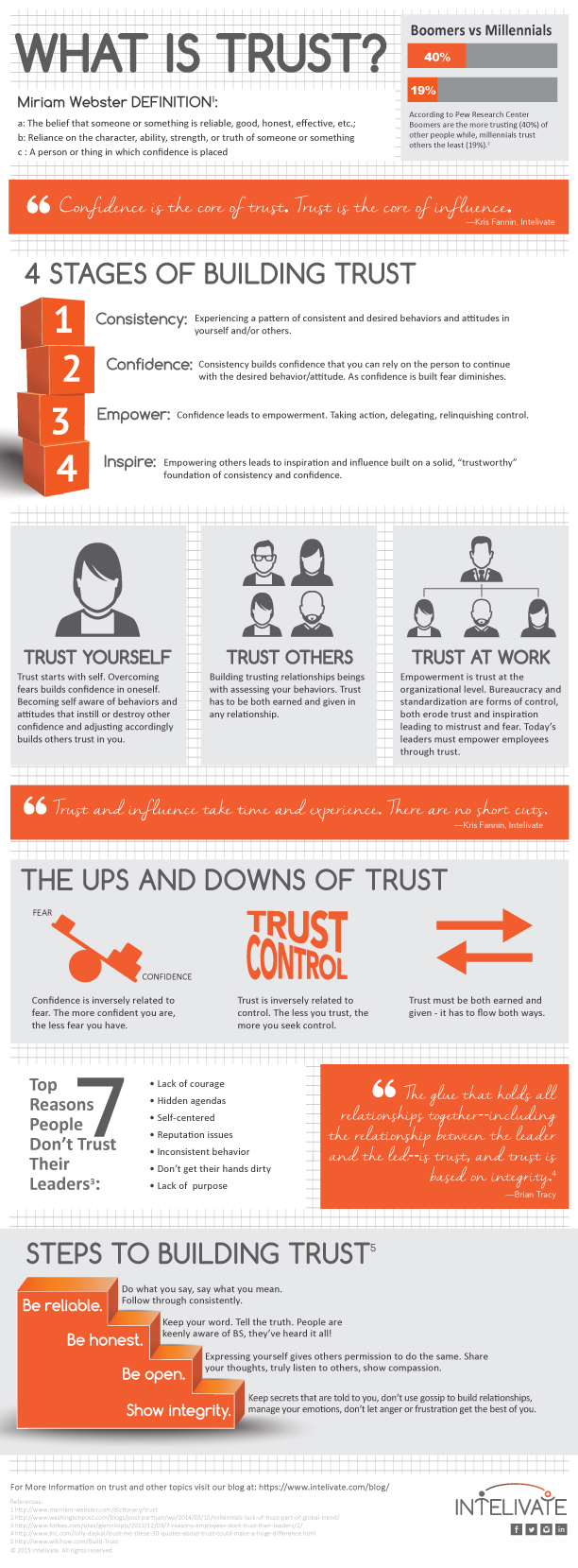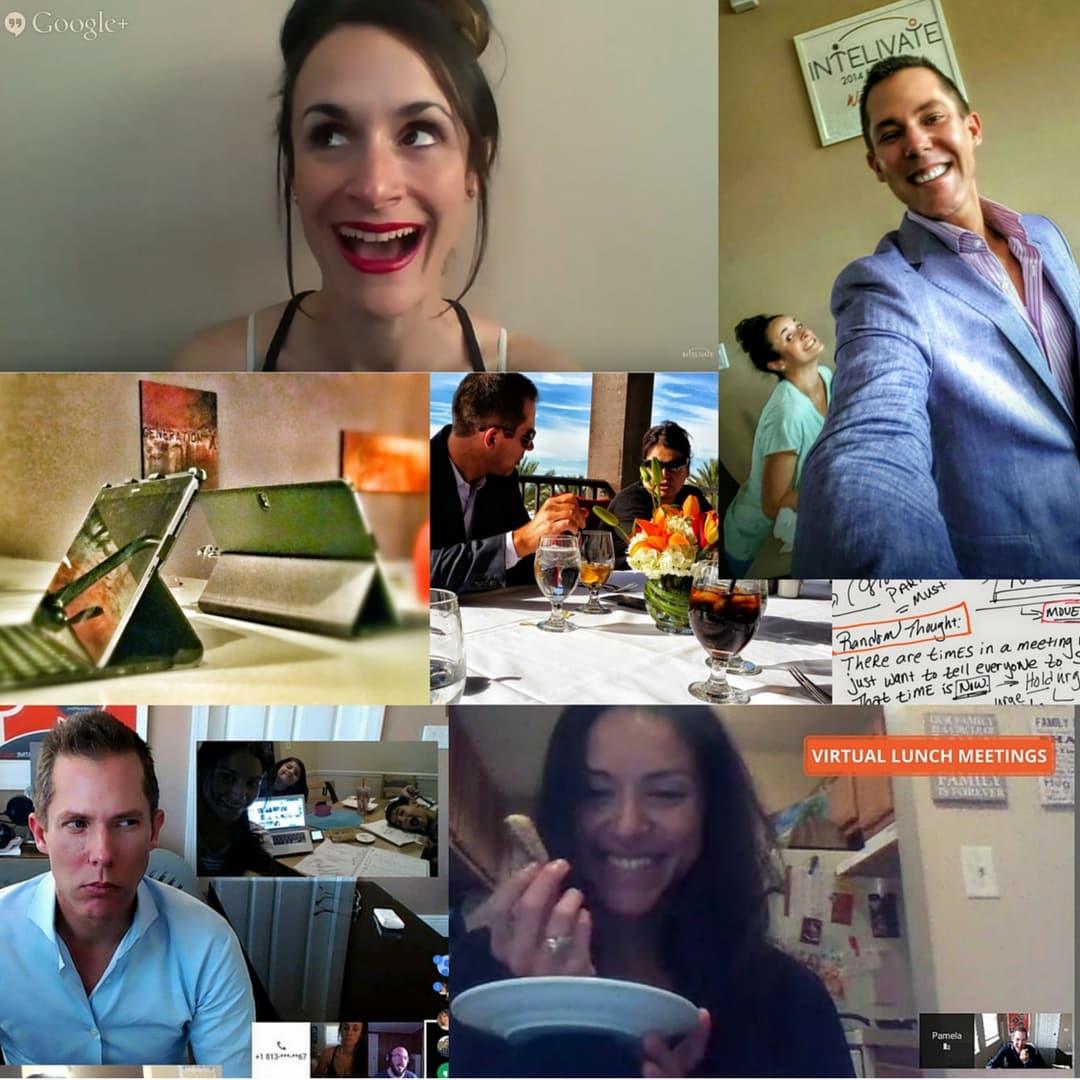When trust issues exist, relationship & leadership effectiveness suffer. Intelivate breaks down the basics to help you rebuild trust – and relationships.
Want to understand what trust is, and how to rebuild it?
Ever found yourself lost in thoughts and queries when you know trust issues are present, and wished upon wish that someone, something would come along and tie up all the answers in one nice, neat little package?
Then look no further! Today must be your lucky day.
We have the answers to those burning questions around trust issues – and then some – in some info-fantastic-graphics.
When trust issues exist, there is a disruption between levels of confidence and control.
Trust Issues & Rebuilding Trust – Understand the Core
The official Miriam Webster definition of trust is:
a: The belief that someone or something is reliable, good, honest, effective, etc.;
b: Reliance on the character, ability, strength or truth of someone or something
c: A person or thing in which confidence is placed
How to Gain Trust
Think of your closest relationships – past or present. Did you trust them as much as you do now as when you first met them? Likely not. Here’s how you gain trust over time and experience. This quick overview is taken from Kris Fannin’s piece on toxic leadership and micromanagement.
In order to regain trust, you must first understand the basics of how to gain trust.
Trust is Dimensional
You can trust someone in one area but not another. Additionally, there are areas of your work and life that are easier for you to give trust.
Consistency & Trust Have a Direct Relationship
We build trust when we see in others what we deem as desired behaviors and attitudes. They think and act in the desired way, and that ‘way’ is individually defined.
Even in our personal lives, we build trust with others when we experience a pattern of consistent and desired behaviors and attitudes in others. As soon as we stop seeing that consistency, trust diminishes.
If we never experience that consistency, we never build that trust.
Once trust is built, it grows to empowerment and eventually inspiration, with the latter being rare.
Trust & Control Have an Inverse Relationship
A lack of trust results in the desire to control or ‘micromanage.’ There is an inverse relationship between the need to control and trust.
Although we think of a micromanager as an overbearing boss, many people show the same behaviors in their personal lives. Whether the cycle of micromanagement happens in the office or at home, it’s toxic.
An extreme lack of trust leads to fear, especially in leadership roles. Kris’ father was a USAF pilot for huge aircraft. His father, though, was terrified to fly as a passenger.
Why?
He needed to be in control – even when he wasn’t the leader.
Generational Trust Issues
According to Pew Research Center, Boomers are more trusting (40%) of other people, while millennials trust others the least (19%)
How to Build or Rebuild Trust- 4 Stages
If the core of influence is trust, then the key to building influence is building trust. If there are trust issues in the relationship (personal or professional), the stages to rebuild trust are the same.
Rebuild Trust Stage 1: Consistency
Experiencing a pattern of consistent and desired behaviors and attitudes in yourself and others.
What was the action that began your trust issues? Identifying that behavior or display of attitude in the other person is critical to rebuilding trust.
Why?
The displayed behavior MUST be a high-priority to you.
To rebuild trust and resolve ongoing trust issues, your needs must be expressed to the other person. That is the only way they have the opportunity to repair the damage and consistently display the behaviors that you put at a high priority.
Rebuild Trust Stage 2: Confidence
Consistency builds confidence that you can rely on the person to continue with the defined desired behavior/attitude. Fear – especially the fear of imperfection or disappointment – diminishes as confidence builds.
If someone has trust issues with you, identify what behaviors you must display consistently to rebuild trust with the person. It will take time, experience and consistency to begin resolving any trust issues. Be patient.
Rebuild Trust Stage 3: Empower
Confidence leads to empowerment. Taking action, delegating and relinquishing control.
This involves both empowering you (rebuild trust in yourself) and empowering others (rebuild trust in others).
You build influence through others trusting you. They enable you to impact areas of greater value. When you encounter trust issues in these relationships, be proactive and diagnose them quickly.
Rebuild Trust Stage 4: Inspire
Empowering others leads to inspiration and influence built on a stable, “trustworthy” foundation of consistency and confidence. Once you build or rebuild trust to a level you empower people to impact the deepest, most important parts of yourself or business, then you reach a point of inspiring.
This is rare, which is why it is so impacting. If you reach this level, do whatever it takes to identify and mitigate trust issues early. Rebuilding trust to this level is much more challenging than maintaining and nurturing it at this stage.
3 Dimensions to Rebuild Trust & Influence
People often think of trust and building influence in only one dimension – trusting others. However, the most important person to build influence and confidence with is you. Trust issues often happen within ourselves.
The process to rebuild trust with yourself is the same.
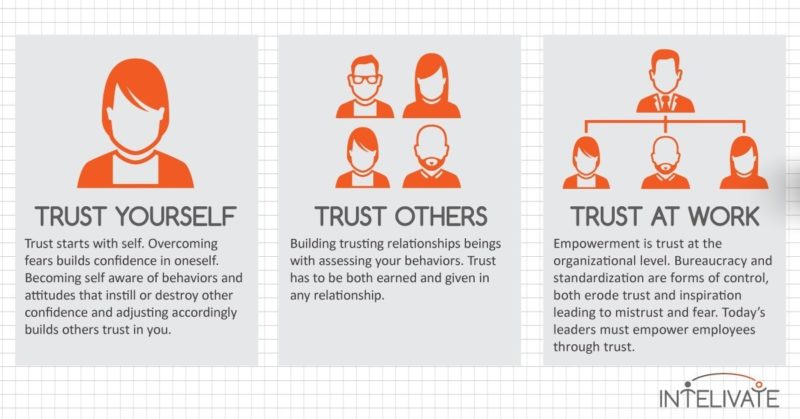
Rebuild Trust in Yourself
Trust starts with self. Overcoming fears build confidence in oneself.
Becoming self-aware of behaviors and attitudes that build or destroy others’ confidence and adjusting creates others trust in you.
Rebuild Trust in Others
Building influence and trusting relationships begin with assessing your actions.
Trust has to be both earned and given in any relationship. This is especially true with leadership and trust.
Rebuild Trust at Work
Empowerment is trust at the organizational level.
Bureaucracy and standardization are forms of control and are often the core of trust issues within an organization or team. Both erode trust and inspiration leading to mistrust and fear.
Today’s leaders must empower employees through trust and be quick to identify team trust issues and begin the process of rebuilding trust. Focusing on building and nurturing trust is one of the most critical characteristics of a leader.
The Ups and Downs of Trust
Here are how trust and influence are related to key variables. These variables often cause trust issues at the core of a relationship.
Fear and Confidence
Trust is inversely related to fear. The more confident you are, the less fear you have. Confidence is trust in oneself.
Trust and Control
Trust is inversely related to control. The less you trust, the more you seek to control.
If you cannot control the thing you do not trust, then you actively avoid it.
Directional Trust
Trust must be both earned and given – it has to flow both ways.
If trust builds in only one direction, it is impossible to build influence effectively. Inequality or lack of mutual flow of trust is the cause of many trust issues in both personal relationships and teams.
Top Reasons People Have Personal and Professional Trust Issues
You cannot effectively build power without trust. Forbes has a great breakdown of the top causes of a lack of leadership trust. These principles are just as applicable to trust issues within personal relationships.
- Lack of courage
- Hidden agendas
- Self-centered
- Reputation issues
- Inconsistent behavior
- Don’t get their hands dirty
- Lack of purpose
How to Build or Rebuild Trust in 4 Steps
Trust is complicated. Here are four simple ways to begin building trust.
- Do what you say, say what you mean. Follow through consistently.
- Keep your word. Tell the truth. People are keenly aware of BS – they’ve heard it all!
- Expressing yourself gives others permission to do the same. Share your thoughts, truly listen to others, and show compassion.
- Keep secrets you are told. Don’t use gossip to build relationships. Manage your emotions and don’t let anger or frustration get the best of you. This is why it’s critical you understand your triggers and build emotional management strategies – especially during times of conflict.
Infographic: Building and Rebuilding Trust
Although the infographic is workforce based, know that the same principles for diagnosing trust issues are the same in personal relationships. Rebuilding trust comes down to understanding the priorities of the other person and yourself.
We know, we know. Somehow we just magically knew what you needed to know about trust.
We trust – see what we did there – that you can now face the world more confidently, steeped in self-trust and armed to empower others with your trust.
Keep Reading: Calm Chaos – 10 Ways to Eliminate Unhealthy Relationships →
